Chester A. Arthur Home
Introduction
Text-to-speech Audio
On the first floor of this five-story brownstone on Lexington Avenue, Chester A. Arthur took the oath of office and became the 21st president of the United States on September 20, 1881. The day before, President James Garfield succumbed to injuries from an assassin's bullet that had struck him in July. Although he was generally respected as a president, the Republican Arthur alienated members of his own party, and they refused to renominate him in 1884. The following year, he returned to this home, where he had lived during most of his adulthood, and planned to resume his legal career. However, Arthur quickly became ill and died at his New York residence in 1886. Since then, the home has changed ownership numerous times, and several changes have been made, most notably the conversion to retail space on the first floor. In 1965, the building became a National Historic Landmark, and a historical marker indicates that Arthur was sworn into office at 2:15 AM within the parlor of the former home.
Images
A historic photo of the Chester A. Arthur House, where Arthur was inaugurated and later died.
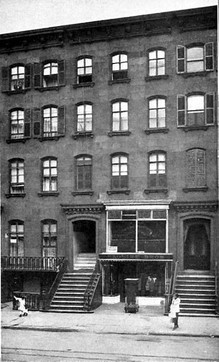
A depiction of the inauguration of Chester A. Arthur in his townhouse on Lexington Avenue in 1881.
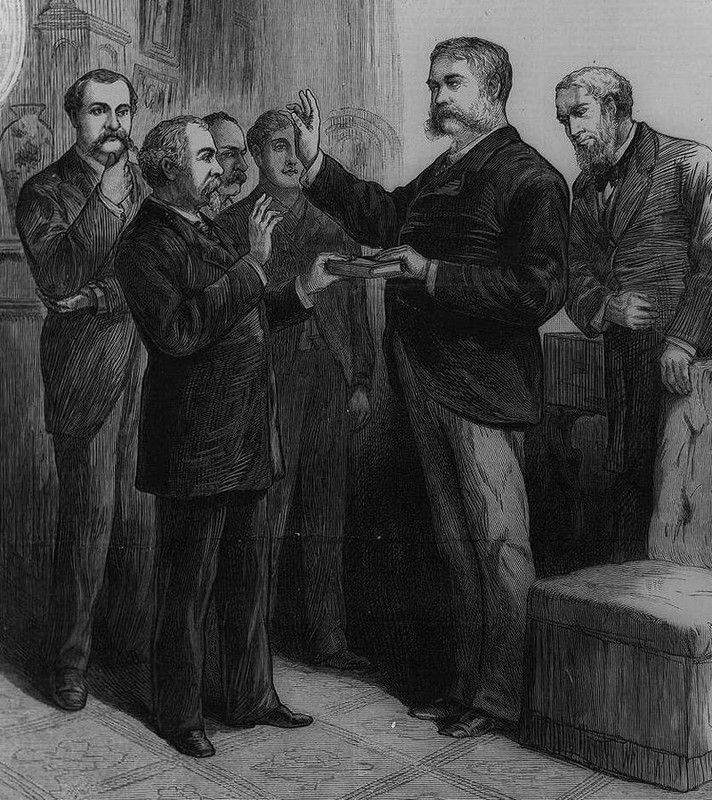
An illustration of Arthur's Lexington Avenue home, ca. 1860.
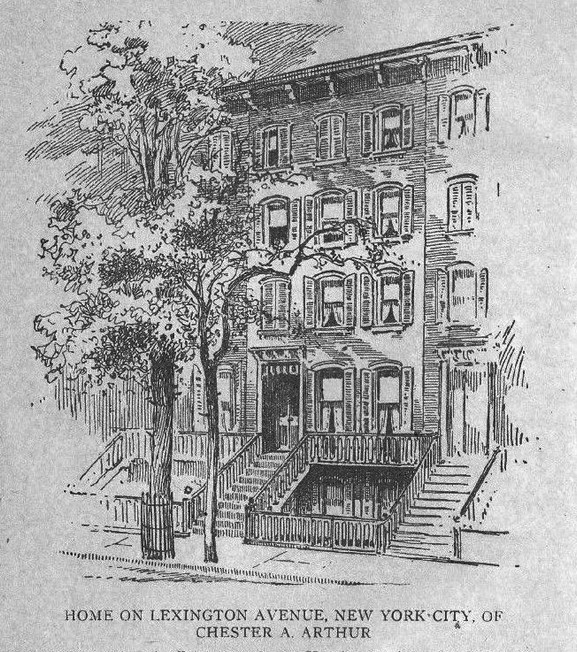
The Chester A. Arthur House is currently a grocery story and delicatessen.
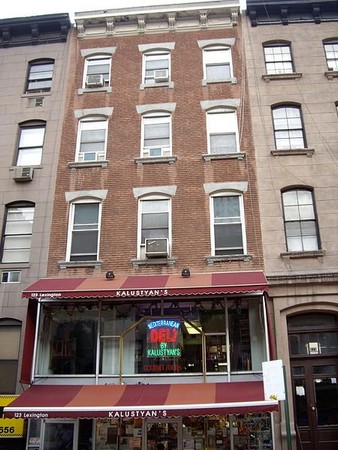
Portrait of the 21st President of the United States, Chester Arthur, by Daniel Huntington.
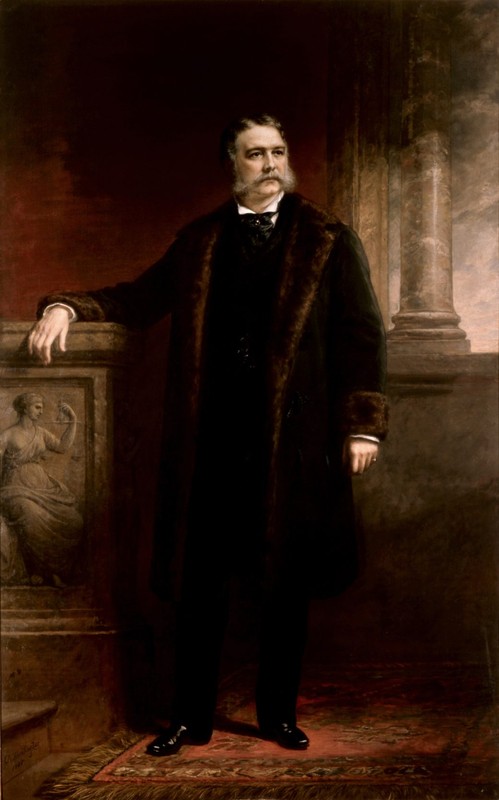
This photo from the Historical Marker Database shows the historical marker in the building's window.
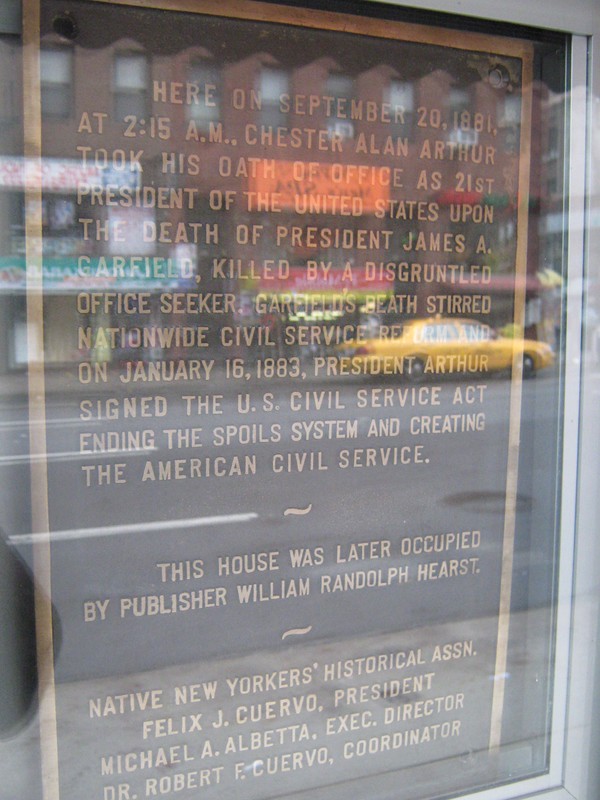
Backstory and Context
Text-to-speech Audio
On September 19, 1881, President James Garfield died from injuries he sustained two months prior when a disgruntled office seeker shot him. Shortly after 2:00 AM the next day, Vice President Chester A. Arthur took the oath of office on the first floor of his New York City townhouse. Cabinet members had urged Arthur to be sworn in quickly, and the first judge found to administer the oath was a John R. Brady, a Democratic New York State Supreme Court justice.
After taking the oath, the new president was left to fend off reporters at his door and greet some well-wishers before going to bed. Two days later, upon returning to Washington, Arthur was sworn in once again by the Chief Justice of the Supreme Court. At the time he became president, Arthur was still mourning the loss of his wife and was the second man to ascend to the presidency because of an assassination. He is also the second president to be sworn into office in New York, the first being Geoge Washington.
Arthur was born in Fairfield, Vermont in 1829 and was the son of a Baptist preacher who had emigrated from Northern Ireland. After graduating from Union College, he was admitted to the bar and practiced law in New York City. It was then that he moved into this brownstone townhouse. Due to his being anti-slavery, Arthur joined the Republican Party. During the Civil War, he was the Quartermaster General of the State of New York, and as Arthur advanced in Senator Roscoe Conkling’s political machine, he was rewarded by President Ulysses S. Grant and appointed the Collector of Customs for the Port of New York.
When Rutherford B. Hayes took office, he was set on civil service reform and removed Arthur, a firm Conkling supporter and the Stalwart faction of the Republican Party, from the position. When Arthur became vice president under Garfield, he continued to support the Stalwarts. However, as president, Arthur turned against the Stalwarts, pushed for civil service reform, and strove to unify his party. During his presidency, the Pendleton Act of 1883 was passed, protecting employees from removal for political reasons. The Republicans did not renominate Arthur in 1884, and he returned to his home in New York, where he died from kidney disease two years later.
The five-story brownstone in the Romanesque Revival style was named a National Historic Landmark in 1965. Outside the building is a plaque encased in glass placed by the Native New Yorkers Historical Society and the New York Life Insurance Company. Although often overlooked, it describes the history of the building and the famous events that occurred there. William Randolph Hearst, an influential newspaper publisher, also owned a home in this brownstone. Since 1944, the first two floors have served as Kalustyan’s, a well-known spice store and delicatessen. Tenants occupy the upper three floors.
Arthur’s inauguration was one of two to take place in New York City, with the first being Washington’s at the Old Federal Hall, when the city was the nation’s capital. Since the Old Federal Hall has been demolished and replaced, Arthur’s former home on Lexington Avenue is the only remaining building in New York City to have been the place of a presidential inauguration.
Sources
Chester A. Arthur House New York, National Park Service. Accessed October 16th, 2023. https://www.nps.gov/nr/travel/presidents/chester_arthur_house.html.
Clark, Roger. New York City's Often Overlooked History of Presidential Inaugurations, NY 1. January 18th, 2021. Accessed October 17th, 2023. https://ny1.com/nyc/all-boroughs/news/2021/01/17/a-presidential-inauguration-in-new-york-city#.
Roberts, Sam. Where a President Took the Oath, Indifference May Become Official, The New York Times. December 7th, 2014. Accessed October 17th, 2023. https://www.nytimes.com/2014/12/08/nyregion/where-a-president-took-the-oath-indifference-may-become-official.html.
Chester A. Arthur, The White House. Accessed October 17th, 2023. https://www.whitehouse.gov/about-the-white-house/presidents/chester-a-arthur/.
Chester A. Arthur Home, Spotting History. Accessed October 18th, 2023. https://www.spottinghistory.com/view/11718/chester-a-arthur-home/.
Atlas Obscura
Atlas Obscura
Atlas Obscura
Atlas Obscura
The White House Historical Association
https://www.hmdb.org/PhotoFullSize.asp?PhotoID=368046
